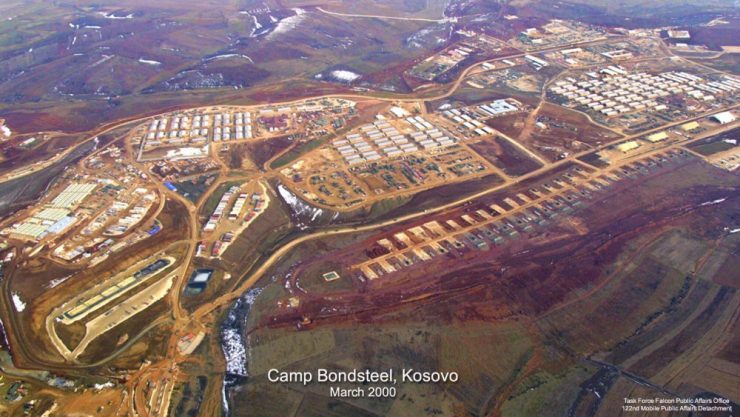
Along with Mladić, the ICTY convicted the other so-called "Butcher of Bosnia", the Bosnian Serb and former Republika Sprska leader Radovan Karadžić in 2016. Meanwhile, it fully exonerated the Bosnian Muslim army commander Naser Orić of similar charges which outraged the people of Serbia. Yet, it was the same court that posthumously exonerated former Serbian President Slobodan Milošević in 2016. If you weren't aware of the latter, it's because it was not widely reported in Western media. Milošević is still generally viewed to be the central villain of the entire conflict even though the charges against him didn't hold up, but not until a decade after he died of heart failure while on trial in the Hague.
The ICTY in its ruling stated "there was no sufficient evidence presented in this case to find that Slobodan Milošević agreed with the common plan to create territories ethnically cleansed of non-Serbs." The ICTY, established in violation of the UN charter, is itself viewed to be an arm of NATO and biased against the Serbs but even it seems to have determined that any alleged war crimes and ethnic cleansing by the Bosnian Serbs was strictly a Karadžić-Mladić affair and not part of a chain of command leading to Milošević.
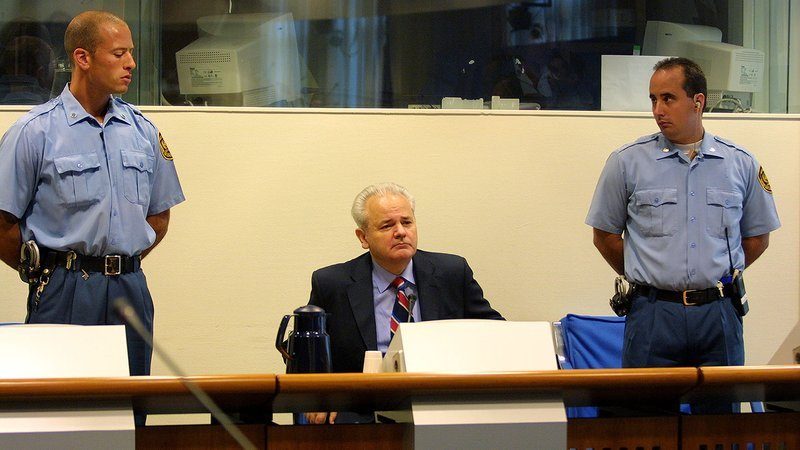
This is not what was presented by NATO and its media surrogates at the time which was that the Bosnian Serbs were acting under direct orders from Belgrade. The narrative was that Milošević's policies and the Serbian government shared as much of the blame, while the reality is that an extremely complex conflict was simplified into a heroes and villains story in order to sell military intervention to the public. Not only were atrocities committed on all sides in the Yugoslav wars, but the NATO powers sided with right-wing nationalists in Bosnia and Croatia and extremist separatists in Kosovo against the Serbs in order to ensure their own geopolitical interests in the breakup of Yugoslavia. In fact, the entire foreign policy of the west toward Yugoslavia facilitated the very problems it used military intervention to 'solve.'
It was the infamous massacre of Bosnian Muslims in the village of Srebrenica in 1995 which thrust NATO's military involvement into the conflict. Undoubtedly a war crime, what was disputed was whether it constituted an act of genocide since the victims were almost exclusively several thousand Muslim men and boys at the hands of the Bosnian Serbs. Women and children were specifically separated and evacuated out of the town under Mladić's orders just prior to the killings. The possibility that the carnage in Srebrenica could have been the result of revenge executions in retaliation for the widespread terrorism committed against dozens of Bosnian Serb towns by the Bosnian Muslim army for years under the warlord Naser Orić was never explored. Some of the well documented acts by Orić's forces included executions, beheadings, eye gouging and even disembowling Serbs and the victims included many women and children.
What took place in Srebrenica was certainly a horrific crime, but it could only be seen as unprovoked and not the result of grudge killings if removed from the context of the dozens of raids of Serb villages neighboring Srebrenica. Orić and his militias had been carrying them out for two years up until that point but this was widely suppressed. Srebrenica was stage-managed as an unprovoked atrocity committed by evil villains against pure victims in order to sell the case for military intervention against one side. It has even been since portrayed as an act of genocide when it was one instance of many throughout the entire Yugoslav wars of summary executions. Executions, rapes and torture were committed by all sides. To call it genocide is an insult to the victims of the holocaust in the former Yugoslavia, of which the majority were Serbs. There is no doubt Serbs did their share of war crimes and ethnic cleansing in the Yugoslav wars, but NATO and its media stenographers only told part of the story that was fundamentally a civil war and not genocide.
The number of dead in Srebrenica also may have been inflated to 8,000 when its actual number is significantly lower, according to scholars such as Edward S. Herman, Diana Johnstone, John Pilger, Michael Parenti, and former Attorney General and human rights lawyer Ramsey Clark who defended Milošević in the Hague tribunal. Many of the dead could have been those killed in the battle for the town, considering that the victims were virtually all male and Mladić's forces had evacuated Muslim women and children out of the town. This would not have been the only occasion of inflated numbers of victims for sensationalism during the wars as the media had routinely repeated ad nauseam wildly erroneous statistics such as 100,000 Bosnian Muslim women having been raped by Serbs, an impossible number when the Bosnian Serb army was only 30,000 strong.
Srebrenica: A Town Betrayed (documentary)
In the stunning documentary Srebrenica: A Town Betrayed, a police chief of the town shockingly claims that in a meeting with Bosnia and Herzegovina's President Alija Izetbegović, Clinton suggested his 'red line' was that at least 5,000 Muslim lives would need to be lost in order to justify any NATO air strikes against Serb forces. It would not have been the first time 'false flags' may have been used by the Bosnian Muslims. There had been two bombings of markets in Sarajevo, known as the 'Markale massacres', that were immediately pinned on the Serbs when much of the evidence gathered and eyewitness accounts suggested they were staged attacks that came from areas held by Bosnian Muslim army forces.
Even accepting the stated number of victims, this amount did not exceed the amount of Serbs killed by the Bosnian Muslims in the villages surrounding Srebrenica which was never demilitarized despite being under Dutch UN peacekeeping forces which Orić took full advantage of. NATO, an organization that was designed as a strictly defensive military alliance during the Cold War, needed a new purpose and was given one in its illegal offensive attack in Operation Deliberate Force against the Bosnian Serbs.
It is impossible to comprehend such a complex conflict without first understanding the history of the Balkans during WW2, and which of the republics had collaborated with the Axis powers during their occupation. In 1939, Mussolini invaded the Kingdom of Albania and annexed it as an Italian protectorate. The axis powers collectively invaded the Kingdom of Yugoslavia two years later, with Serbia under the military occupation of the Wehrmacht while much of the rest of Yugoslavia was absorbed into a puppet regime known as the Independent State of Croatia under the dictator Ante Pavelić.
Bosnia and Herzegovina's President Alija Izetbegović had himself been a Nazi collaborator during WW2 in his youth when modern day Bosnia and Herzegovina territory was under the Independent State of Croatia. His Islamist organization, the Young Muslims, sided with the 13th Waffen SS Handzar Division against the Yugoslav partisans. The first non-Germanic SS division came under the Independent State of Croatia and among its ranks were more than 18,000 Bosnian Muslims who slaughtered both Serbs, Roma and Jews.
Izetbegović served several years in jail for his support of the Nazi occupation of Croatia after the end of the war under Tito. As a politician, he advocated an Islamic state with strict Sharia law and the Bosnian Muslims fostered a revival of the legacy of the SS Handzar Division he had supported in his youth in order to revive nationalist fervor against the Serbs. An example of this propaganda is the cover of the October 1991 Sarajevo magazine Novi Vox depicting a Bosnian Muslim Nazi SS officer stepping on the severed head of Bosnian Serb/Republika Sprska leader Radovan Karadžić (Republika Sprska was the Serb-majority republic within Bosnia and Herzegovina).
NATO and the pliant western media overlooked entirely the neo-fascism of the Tuđjman government in Croatia as well. Croatian leader Franjo Tuđjman had himself fought for the partisans during WW2 (though some claim he was undercover Ustaše), but under Tito he was jailed for supporting Croatian nationalism. As a politician, he expressed fervent anti-Semitism ("the establishment of Hitler's new European order can be justified by the need to be rid of the Jews") and holocaust denial in his autobiography (claiming only 900,000 Jews, not six million were killed).
Tuđjman expressed affinity for the Independent State of Croatia and its Ustaše terrorist organization which committed genocide against Jews, Gypsys and above all Serbs. His political party, the Croatian Democratic Union (HDZ), resurrected the fascist symbols and iconography of the Ustaše era such as the checkered Croatian flag. Many monuments erected honoring the partisans in Croatia were defaced and destroyed. The HDZ generally promotes a whitewashed revisionist history of the Independent State of Croatia and denial of the crimes committed by the Ustaše, which were infamously amongst the most cruel and inhumane in all of WW2. The relationship between the Catholic Church under Pope Pius and Nazi Germany is no secret and this manifested significantly in the predominantly Catholic Croatia where the clergy worked intimately with the Ustaše. Many within the clergy hoped the communist-led partisans would be defeated and the Orthodox Christian majority Serbs would be forcibly converted back to Catholicism. It was after Ante Pavelić was given his papal blessing that the Ustaše began their horrific crimes against Roma Gypsys, Jews and especially Serbs.
In the Yugoslav Wars, the Croatian War (1991 - 1995) resulted when Serbs within Croatia formed a secessionist republic of their own, the Republic of Serbian Krajina, that wished to merge with Republika Sprska (the Serb majority republic within Bosnia-Herzegovina) and the Federal of Republic of Yugoslavia which was jointly formed by Serbia and Montenegro after Slovenia, Croatia, and Bosnia-Herzegovina seceded. Considering the history of Yugoslavia and that more than a third of Croatia is Serbian, their desire for autonomy from a Croatian nationalist regime is understandable. Tuđjman openly spoke of plans for a 'Greater Croatia' and Serbs did not have a short memory of their suffering at the hands of intolerant Croatian nationalists during the holocaust. Tuđjman made ethnic cleansing of Serbs an official policy and oversaw the expulsion of more than a quarter of a million Serbs from Krajina, with many raped and executed, but the media only covered any such crimes when they were done by Serbs.
In the later conflict, the Kosovo Liberation Army, also armed and trained by the CIA, was similarly rebranded to serve the anti-Serb storyline. The KLA's publicly declared aim of an ethnically pure Albanian state through secession from Serbia was also traceable back to the Axis powers in WWII with the Italian fascist occupation of Albania and its annexation of the Kosovo province. The KLA's stated desire to establish a 'Greater Albania' was a resurrection and territorial replica of the Greater Albania promised to the Kosovar Albanians by Mussolini, which included part of Greece and Macedonia.
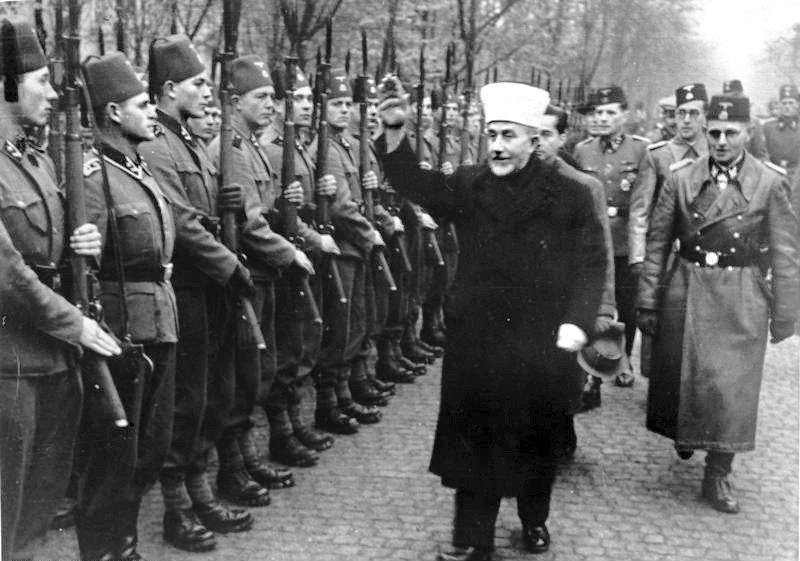
Like the Bosnian Muslims, the vast majority of Kosovar Albanians are Sunni Muslim. The KLA received support from volunteers from Western Europe that were members of radical Sunni groups allied to Osama bin Laden and Ayman al-Zawahiri. In fact, some members of the KLA were even trained in bin Laden's camps but the organization was removed as a listed terrorist group despite these ties. The KLA committed many grisly beheadings of Serbs just as the Bosnian Muslims had done. Both may have gotten inspiration for this practice from the Ustaše which had been known for beheadings during WW2. The KLA not only received its funding from foreign backers but from well documented mafia criminal enterprise which included drug smuggling (especially the heroin trade) and even the selling of the organs of Serb victims on the black market.
The Council of Europe published a report in 2016 that detailed accusations of human organ trafficking against the KLA leader and now current President of Kosovo, Hashim Thaçi, who has in years since donated to the Clinton Foundation and a statue honoring Bill Clinton has also since been erected in Kosovo. The brutality of the KLA's terrorism and ethnic cleansing of Serbs can be seen in the documentary Stolen Kosovo. There were certainly terrible acts committed against Kosovar Albanians by the Serbs, but many more committed by the KLA against them as well as the significant amount of ethnic Albanians who did not support them. Under Tito, Kosovo had been overwhelming popular for ethnic Albanians and many from neighboring Albania under Enver Hoxha crossed the border into Yugoslavia to live there.
Stolen Kosovo (documentary)
During the Cold War, the likes of Bosnia, Croatia and Kosovo never underwent full de-Nazification. By the time of Tito's death and the collapse of the USSR, the doors for empire were opened to encourage nationalist secession in order to break the republic up into, eventually, seven states. In 1991, the Foreign Operations Appropriation Bill cut off loans, trade and aid to any of the republics that did not declare independence. After Slovenia, Croatia, and Bosnia and Herzegovina seceded, Serbia and Montenegro jointly formed the Federal Republic of Yugoslavia. The myth that the Serbs desired a 'greater Serbia" was parroted by the media, when most of what they wished to preserve was the remains of Yugoslavia that was being torn apart. Serbs during WW2 had been the foremost victims of the holocaust in Yugoslavia and in WW2 fought alongside the Allies. Serbs had ironically even saved Secretary of State Madeleine Albright's father Josef Korbel, a Czech diplomat who lived in Belgrade during the holocaust. She decided to repay them with 78 days of bombing resulting in the highest rate of oncological diseases in Europe. The Serbian population rallied around Milošević during the bombing before the U.S. poured money into opposition parties that ousted him the following election. Kosovo, despite declaring its "independence", has since remained a disputed territory and a neo-colony of the west under NATO military occupation. Following the end of the Cold War, NATO's uncertain role was redefined with its imperialist utilization in Bosnia and Kosovo and secured further expansion on Russia's border. Camp Bondsteel in Kosovo is allegedly so large it is one of the few man-made structures visible from outer space.
About the author
Max Parry is an independent journalist in Brooklyn, NY. His work is syndicated by Medium. This is a crosspost with some editorial additions of his Medium original piece.
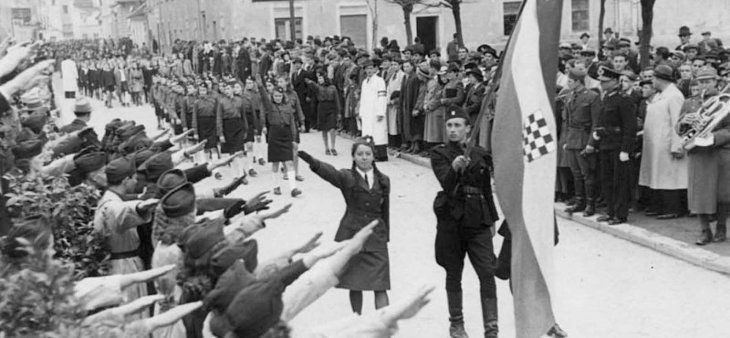
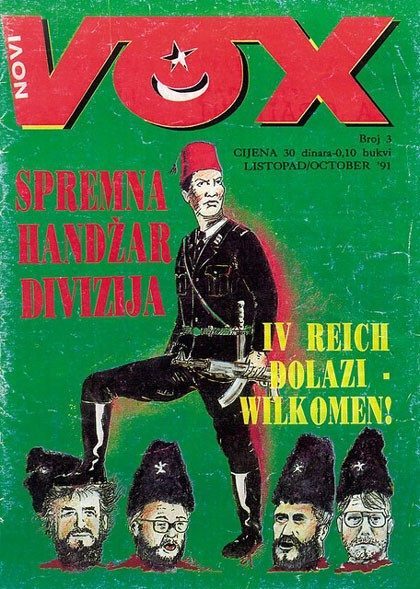
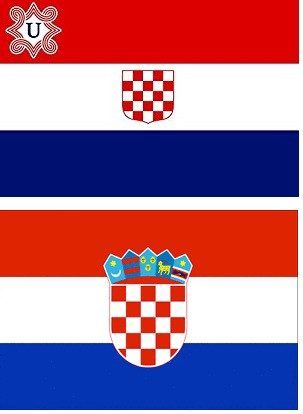
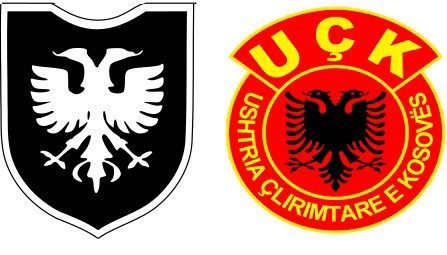
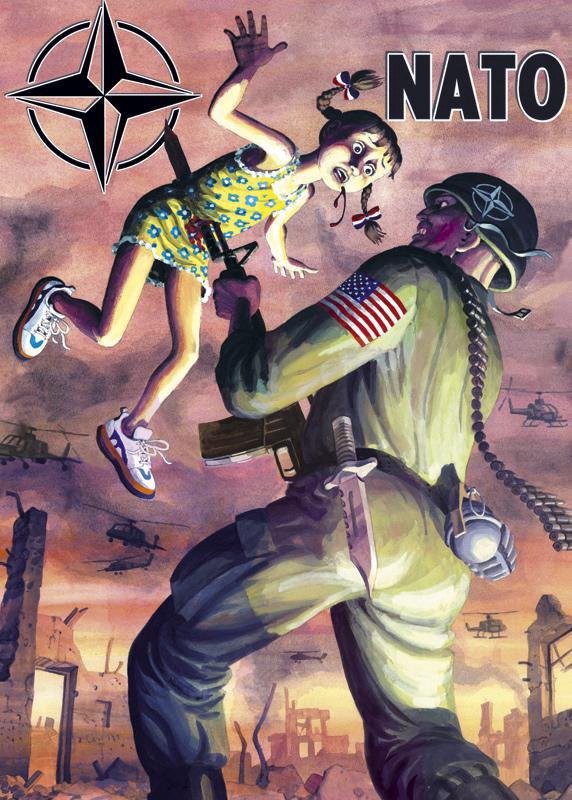
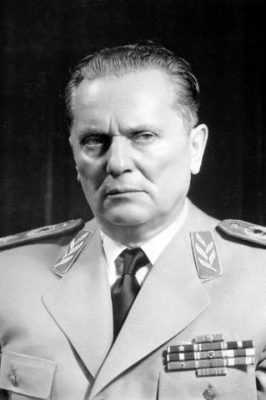



Comment:
Notes to the videos:
First video embedded following
"In fact, the entire foreign policy of the west toward Yugoslavia facilitated the very problems it used military intervention to 'solve.' is: Exclusive: U.S. Policy on Bosnia Arms Trafficking. This is a clip, or a selection of clips from Sarajevo Ricochet which is a one hour documentary originally in Norwegian. The original (with Norwegian comments) can be found in six clips on this channel, along with the other Norwegian production, which is the second video in the article, Srebrenica: A Town Betrayed, uploaded in seven parts. To understand the content in Norwegian, one can follow the auto-translation of the transcription.
Second video: Srebrenica: A Town Betrayed (Documentary) SOTT article with video link.
Third video: The full YouTube title of the documentary Stolen Kosovo is Serbia - Stolen Kosovo [Multisubs] Czech documentary by Václav Dvořák
Fourth video: See also the article on SOTT: Documentary: Зaшto? (Why?) - Revisiting NATO atrocities in Yugoslavia (Mar 2014)
Fifth video: Michael Parenti - To Kill A Nation
Sixth video: The Weight of Chains: US/NATO Destruction of Yugoslavia (Documentary) (2010 SOTT.net article). Note to the above, there is also The Weight of Chains 2 | Težina lanaca 2
Seventh video: Yugoslavia: The Avoidable War (documentary)